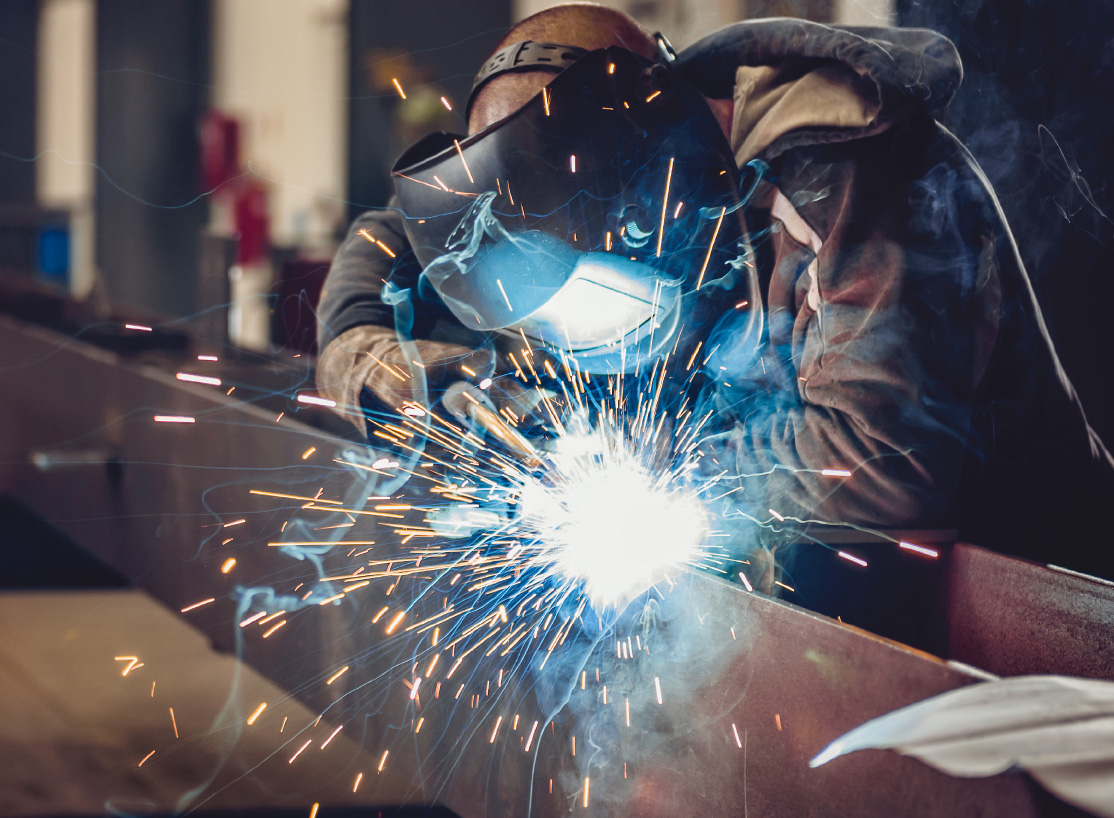What is pulse MIG welding?

If you work in engineering, you’ve probably heard of pulsed MIG welding, but what does that actually mean?
In MIG welding, there are 4 main ways to transfer the filler material to the piece of metal you’re working on (the workpiece). Pulse is one of these ways, along with dip, spray and globular transfer.
Dip transfer is when the filler material actually touches the workpiece, creating a short-circuit which melts the filler material and workpiece together. This happens at relatively low levels of electric current.
Spray transfer is when the electric current is turned up high enough that the filler material and workpiece melt before they meet, so the molten filler material ‘sprays’ on to the workpiece. This happens at higher levels of electric current.
Globular transfer is when the electric current is between dip and spray transfer. This results in irregularly shaped globs dropping onto the molten workpiece. It isn’t commonly used in normal welding processes.
Pulse transfer is a different beast altogether. It combines the advantages of dip and spray, while minimising the disadvantages of both. It works by combining two power sources into one unit; one of these runs a low background current, keeping the tip of the filler wire molten. The other gives pulses of a higher current, which detach droplets of the molten filler wire on to the workpiece.
Why would I use pulsed MIG welding?
To give an demonstration of where you can use pulsed MIG welding, it helps to go through the advantages and disadvantages of dip and spray transfer.
Dip Transfer
The main advantages of dip transfer are that the low current levels mean you can use it on thin metal without burning through, and you can use it in all welding positions.
However, the disadvantages include the fact that you get more spatter . Spatter means the small molten pieces of metal which fly up from the weld pool and stick to the workpiece, clothes, and anything else within range. The deposition rate (the speed at which you can deposit filler material on to the workpiece) is also lower than spray transfer, which means it is a slower process.
Spray Transfer
The main advantages of spray transfer compared with dip transfer are that you can weld faster because the deposition rate is higher, and you get less spatter.
On the flip side, you can’t use it in all welding positions, because you have less control of the weld pool. It is also difficult to use on thin metal, because the high current levels mean you can easily burn through the material.
Pulse Transfer
Pulsed MIG Transfer combines these advantages – it can be used on thin metal and in all welding positions, but it gives minimal spatter and a high deposition rate. In fact, a pulse MIG welding machine can typically weld up to 30% faster than a traditional machine.
The minimal spatter is also useful when dealing with stainless steel or aluminium. Typically, these metals require a good finish, so you need to remove any spatter. You can do this using abrasives, but it takes time, so less spatter means you can be more productive.
There is a catch – a MIG welding machine with pulsed functionality is usually significantly more expensive. However, it could end up being more efficient. This is because it can usually weld faster and save time in other processes. If you’re not sure whether pulse welding is the right option for you, get in touch with our team.
